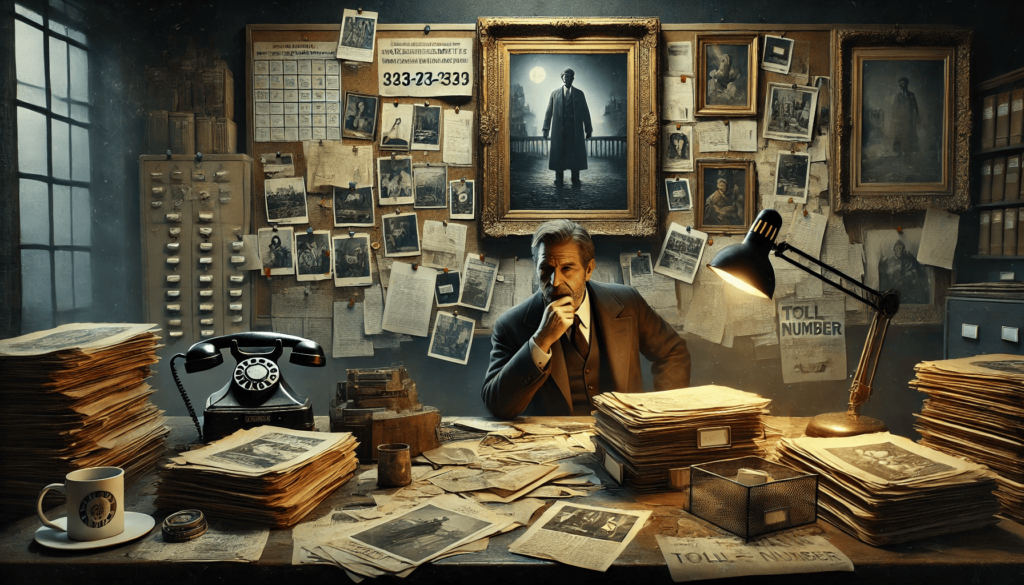PART II
Investigation and hunt for the art thieves:
In addition to official FBI and other law enforcement investigators into the Gardner Art Heist, insurance investigator, Harold Smith became de facto lead investigator. His efforts consumed his life. He started with the knowledge that the actual thieves were most unlikely to come forward unless induced or forced to do so. He also knew—by long experience—that useful informants would not come forward easily. He was certain that some third person knew something about the thieves and the theft. Accordingly, he set out to use social media and general media outlets to seek out evidence.
He made the public at large aware of the $5 million reward offered by the museum. He knew to be patient; that bonds that existed among thieves and their associates would loosen over time. His insurance work gave him hope, since friends became enemies; girl-friends became ex-girl-friends; wives became ex-wives; trusted maids became ex-maids, even disgruntled employees. Even hardened criminals sometimes developed consciences when faced with their own mortality. He knew that frightened or disgruntled associates often accepted help to obtain bounties. He also knew that tipsters were more likely to communicate candidly with him than with police. They had serious needs for privacy and anonymity.
He created a website and a toll-free number and collected and archived many hundreds of tips, most of which were outright duds; most were senile, mentally ill, or just weird; none of which ever paid off in the end. Examples: one woman saw Isabelle Gardner’s ghost tucking pictures under her mattress; a Scottish maid saw her placing priceless canvasses into a hollow door; one knew that the artwork was all in the trunk of a car and buried under a mountain of dirt; some just wanted money. Several gave peculiar little codes, cross-word puzzles, and a brain teaser accompanying a rather bizarre story of a jewelry store hiding the artwork.
There were mysteries, clues, and proclamations of sixth sense to which he paid no mind. Since the robbery, millions of people have visited the Gardner museum to view the empty spaces and frames; thousands have called in leads; and hundreds of detectives have thrown themselves wholeheartedly into the quest. Still nothing.
Smith, and later Mr. Boser, visited the museum while it was still a crime scene. There were still screwholes in the wall which once held a Rembrandt, chips in a wall which held a Napoleonic battle flag; and most meaningfully, the museum staff were very reluctant to participate in interviews. For one thing, they were suffering from an ingrained museum heist fatigue. After long persistence Mr. Smith was able to gain an interview with Anne Hawley, the director.
Ms. Hawley told him that Lyle Grindle, the director of security, called her early in the day when the theft was discovered and informed her. She rushed to the gallery in the museum where the thefts had occurred.
“It just turned to hell after that,” she said. “The problem is not just the theft; it’s dealing with the investigators. You’ve got the FBI; you’ve got other criminals calling you to negotiate a deal. You’ve got the press killing you, because you let it happen. People called me making bomb threats.”
When she greeted the assembled press, she said, “The theft was a violent act. It was a murder, a death.”
Nearly everyone bemoaned the lack of adequate security, even the security staff. It was a matter of money. Security and other infrastructure is costly; the cost of wiring for secret alarms behind extremely valuable paintings is deemed too costly; guards are often the weak point in the system. Most institutions only allot a few days or just hours to training them. Most of the guards are poorly educated, especially in art; and they have only limited incentive to do their jobs. Most museums pay their guards responsible for billions of dollars in artwork, about a dollar an hour more than McDonalds pays its hamburger flippers. Evaluation of museum security generally reveals lax requirements for making regular rounds, checking doors and windows, asking people to leave who are alone after closing hours. Many of Gardner’s guards were young, quirky, irreverent, oddball musicians, and rather insubordinate—part of the hippy generation. In short, they did not take security seriously. A prime example was Ray Abell.
He came to work in clothes that made him look like a Mötley Crue groupie—loud T-shirts, curly-hair pony tail hanging down his back. He–like most of the other night guards–believed that being paid $4 an hour was not enough to get them to walk the spooky darkened hallways of the museum. When Isabella Stewart Gardner died, she left sufficient funds to pay all the security costs, but the frugal directors decided not to do so.
The theft was discovered early the next morning, and the police responded very promptly—but to no avail. The paintings and the thieves were long gone, and there were no clues. The FBI was summoned at 8:00 o-clock. The theft was a complete loss; the museum could not afford insurance. Instead, the director contacted Sothebys and Christies to offer bounties. FBI special agent Dan Falzone [the only FBI specialist in art theft] who was very thorough and professional. Falzone and his deputies interviewed hundreds of suspects and chased down thousands of leads. They set up roadblocks to encounter bystanders. They sought out anyone connected with the museum: guards, former employees, carpenters, electricians, paint restorers, ticket takers, caterers, administrators, and donors.
Early on, the FBI considered the most probable motive to be ransom. The suspects deriving from that suspicion all had alibis for the night of the heist, were found only to have poor copies of the original art—including one which was found requiring a trip to Japan to be nothing more than a crude school-child’s paint-by-numbers creation. They even brought psychics to the museums. They set up stings. Some of their leads were outright hoaxes. One Gardner museum long-time employee commented that the security system was not as good as that in a regular log cabin hunting lodge.
All police units, Harold Smith, and Ulrich Boser, ran into what professionals call “the curse of the stolen masterpiece”.
All too often, when paintings are returned, they are ruined by weather or careless use—like being slashed from their frames, or bent and creased with destruction of the dry old paint–because the thieves do not have enough knowledge or love of art to care. Often, they do not plan what to do with expensive art treasures and hide them away in unsafe places. Many are just thrown away because they are too hot to handle. It is easier to ransom than to try to sell a fine painting. And the risk of being caught increases exponentially with the market value of the art piece. Most such paintings are taken after a hungry or greedy art lover offers payment for the piece; but it is not at all common for it to be secreted away in the security stronghold of a billionaire art lover for his/her solitary appreciation.
FBI agents honed in one three separate suspects whom they found to be credible, but after wasting months, even years, to get solid evidence related to the Gardner heist; they finally decided none of them had really committed the crimes.
Nothing came of their efforts, and eventually their interest drained away. Their attention was turned to the sensational hunt, capture, and trial, of the famous gangland figure, James “Whitey” Bulgar. Some of the police officers began to circulate the rumor that the Gardner masterpiece case was cursed. One art thief suspect was shot by police, had a heart attack and lost his long-term memory; another thief became a heroin addict and his wife died of an overdose; another had his throat slit; an investigator became covered inside and out with metastatic squamous cell carcinoma and died from it; and one of the FBI agents involved in the investigation died in a car accident. The best agents wrestled with the concern that they could not tell whether their fascination with the Gardner case was a passion or an obsession. An attorney for one of the thieves complained, “And my golf game has gone to hell.”
In the end, there was a lot of “perhaps”, “seems like”, “suspicious”, but no confessions, no one jailed for the robbery, and no return of the Gardner paintings. Just the same mysterious caper as the day it happened.


